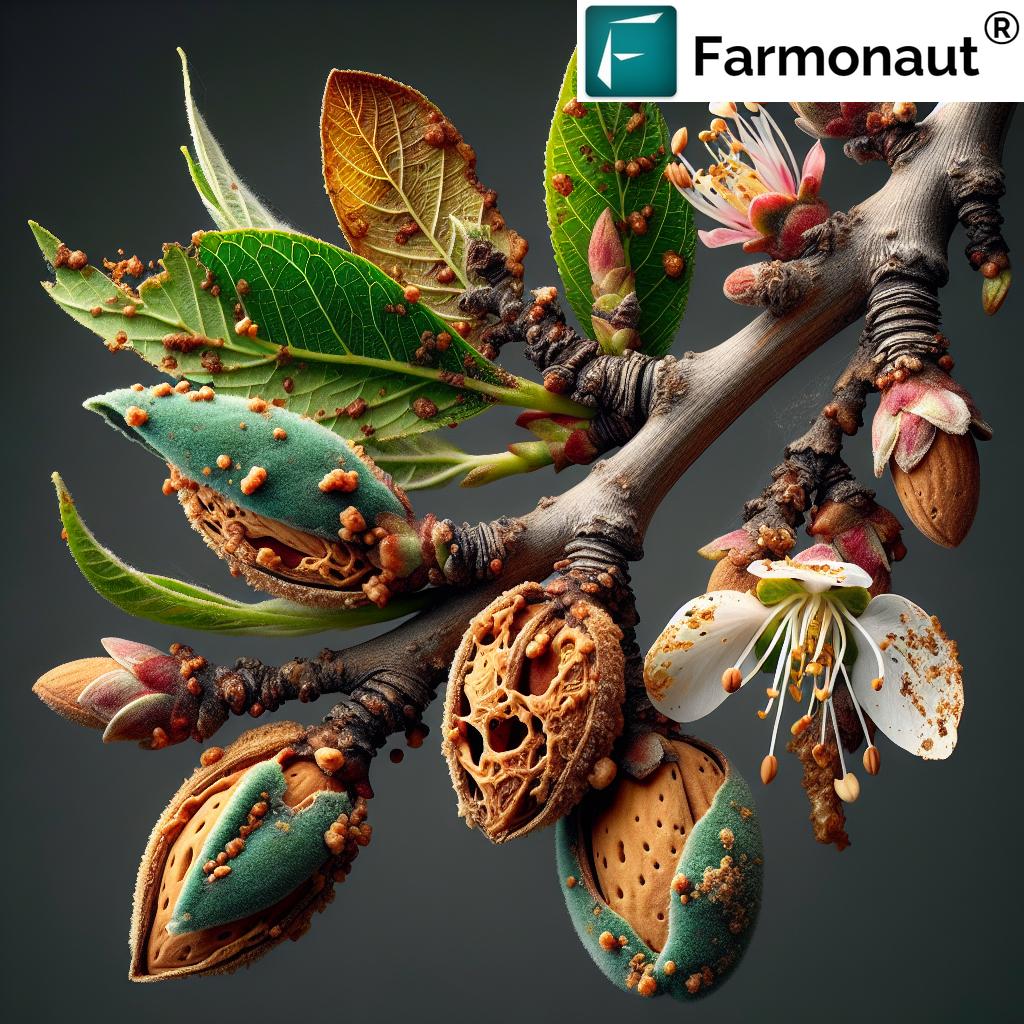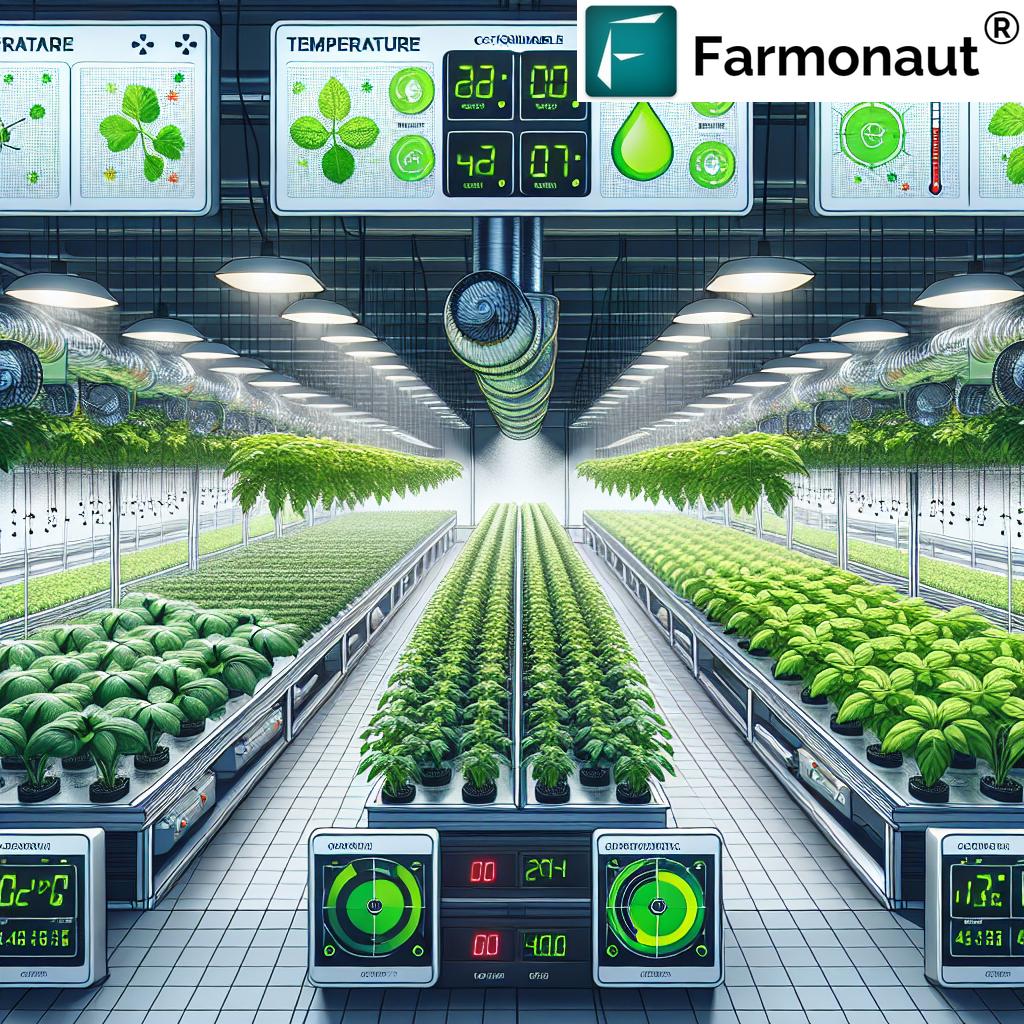Jacaranda Tree, Cascara & Mandarin: 2026 Sustainable Marvels
“The jacaranda tree can absorb over 45 kg of CO2 annually, aiding atmospheric carbon reduction in sustainable forestry.”
Introduction to Jacaranda Tree, Cascara & Mandarin—Sustainable Marvels Across Continents
The jacaranda tree, cascara tree, and mandarin tree embody the evolving face of agriculture and forestry management. From their roots in the vibrant landscapes of South America and the Pacific Northwest to thriving in subtropical and temperate zones across the globe, these species deliver essential economic, medicinal, and environmental value across various sectors. As 2026 approaches, sustainable cultivation, responsible harvesting, and innovative management are critical to maximizing their significance for future generations.
With the growing urgency for climate-smart agricultural and forestry solutions, understanding the unique roles and interplay of these marvels is no longer optional—it is essential for every stakeholder dedicated to conservation and economic prosperity.
“Mandarin orchards increase biodiversity by supporting up to 30% more pollinators compared to monoculture citrus plantations.”
Sustainability Comparison Table for Jacaranda, Cascara, and Mandarin
| Species | Cultivation Method | Estimated Annual Yield (kg/ha) | Average Economic Value (USD/ha) | Water Requirement (l/kg) | Carbon Sequestration Potential (t CO2/ha/yr) | Ecosystem Impact | Common Uses |
|---|---|---|---|---|---|---|---|
| Jacaranda | Agroforestry, Rainfed, Urban Planting | 6,000–9,000 (wood) | 2,000–3,500 | 300–350 | 7.5–9.0 | Soil fertility ★★★✩✩; Biodiversity ★★★★✩ | Timber, Ornamental, Bonsai, Landscaping |
| Cascara | Selective Harvest, Agroforestry, Understory Planting | 1,200–1,600 (bark) | 3,000–4,500 | 120–180 | 3.8–4.7 | Soil fertility ★★★★✩; Biodiversity ★★★✩✩ | Medicinal Bark, Herbal, Pulpwood |
| Mandarin | Irrigated, Rainfed, Monoculture & Intercropping | 22,000–32,000 (fruit) | 10,000–14,000 | 600–850 | 6.2–7.8 | Soil fertility ★★★✩✩; Biodiversity ★★★★★ | Fresh Fruit, Juice, Essential Oil |
Jacaranda Tree: A Forestry and Horticultural Marvel in 2026
Botanical Identity & Global Appeal
The jacaranda tree (Jacaranda mimosifolia)—native to Brazil and Argentina—has earned worldwide admiration for its striking purple-blue flowers, graceful canopy, and fast growth. Since being widely cultivated for both ornamental and forestry purposes, jacaranda has made its way across diverse climates in urban landscaping, parks, and streetscapes from America to Australia and Africa.
Why Is Jacaranda Prized?
- Aesthetic Appeal: Iconic springtime canopies with masses of purple blossoms
- Adaptability: Thrives in subtropical and temperate zones
- Growth Habit: Rapid establishment in both managed and mixed-use urban environments
- Timber Value: Lightweight but durable wood for furniture, cabinetry, and artisanal products—especially in regions where hardwoods are scarce
- Environmental Contributions: High capacity for carbon sequestration, urban heat mitigation, and biodiversity support
Sustainable Jacaranda Cultivation and Management
By 2026, sustainable management of the jacaranda tree has become central to urban forestry policies. Demand for timber and ornamental plantings must be balanced with ecological stewardship to prevent overexploitation and maintain local ecosystems in harmony.
- Reforestation Programs: Widely adopted in South America for landscape restoration, especially in degraded urban corridors.
- Responsible Sourcing: Modern practices emphasize traceability and regeneration; blockchain-powered traceability systems empower producers and buyers alike to verify sourcing, fostering more ethical timber industries.
- Agroforestry Integration: Increasingly, the jacaranda is integrated with crops or other shade-needling forestry species, supporting both ecological and economic goals.
- Water Use Efficiency: Jacaranda is adaptable to rainfed and irrigated conditions, thriving on moderate water inputs compared to other ornamental trees.
- Soil and Biodiversity: Its shedding leaves enrich soil organic matter and support understorey diversity.
Environmental Impact of Jacaranda
Jacaranda tree planting initiatives in Latin America and urban spaces worldwide are credited with:
- Carbon Sequestration: Each mature jacaranda can absorb over 45 kg of CO2 annually.
- Habitat Generation: Its foliage offers microhabitats for birds and insects, enhancing urban biodiversity.
- Erosion Control: Extensive root systems help stabilize soils, especially on slopes or disturbed urban lands.
Applications & Economic Value
The jacaranda tree remains essential for:
- Timber: Lightweight lumber used in crafting furniture, panels, and musical instruments—notably in Brazil and Argentina where imported hardwoods are less feasible.
- Urban Landscaping: As a centerpiece in cities like Buenos Aires, Pretoria, and parts of California and Australia.
- Educational/Horticultural: Teaching species for botany and urban ecology programs globally.
Jacaranda Bonsai: Blending Artistry, Practical Knowledge, and Environmental Education
The jacaranda bonsai is a miniature cultivation of Jacaranda mimosifolia, representing a unique intersection of horticultural artistry with hands-on education in plant care and physiology.
- Bonsai Significance: Jacaranda’s delicate, fern-like leaves, and ability to flower under careful cultivation, captivate enthusiasts globally.
- Educational Role: Demonstrates best practices in watering, pruning, and soil management—knowledge that extends to broader tree management in forestry and agriculture.
- Popular Among Enthusiasts: These bonsai are growing in popularity as both collector’s items and a vehicle for teaching sustainable care.
Best Cultivation Techniques for Jacaranda Bonsai
- Soil: Well-drained, sandy loam with moderate organic content
- Watering: Requires precise watering—moist, never waterlogged
- Pruning: Regular, light pruning to maintain canopy and encourage miniaturized growth
- Light: Prefers bright, diffused sunlight
- Repotting: Every 2–3 years to prevent root crowding
The jacaranda bonsai exemplifies the interplay between artistry, science, and environmental stewardship—a living symbol of how urban dwellers can preserve and appreciate the characteristics of native trees even in limited spaces.
Cascara Tree: Medicinal and Commercial Significance in a Sustainable Era
Botanical Profile—Cascara’s Niche among North American Medicinals
The cascara tree (Rhamnus purshiana), also called cascara sagrada or purshiana, is native to the Pacific Northwest of North America. Long valued for its bark, which contains compounds used as natural laxatives, cascara plays a niche role in herbal medicine and the growing wellness market.
Why Is Cascara Important?
- Medicinal Value: Bark is carefully harvested for anthraquinones, essential in natural and over-the-counter laxative products
- Agroforestry Integration: Thrives as an understory species, boosting biodiversity and soil conservation when integrating with other crops
- Pulpwood Use: Occasionally, the wood enters pulp and paper production, especially in areas with scarce hardwoods
- Biodiversity: Supports native birds and wildlife by providing browse and seed dispersal opportunities
Sustainable Harvesting and Production
- Selectiveness Is Critical: Cascara’s bark must be stripped without killing the tree; selective stripping and rotation are integral to the survival of populations
- Sustainability Initiatives: 2026 marks a period where programs increasingly require certified sustainable wild-harvesting
- Agroforestry Advancements: Encouraged by conservation groups, integrating cascara with edible and timber crops enhances soil quality, combats erosion, and promotes ecosystem resilience
Cascara’s Environmental and Economic Value
- Carbon Sequestration: Cascara acts as a modest carbon sink in reforestation and buffer zones
- Soil Restoration: Frequently planted on degraded or logging-impacted soils for rapid cover and regeneration
- Economic Significance: The high market demand for medicinal bark supports local economies in the Pacific Northwest and North America
Mandarin Tree: The Citrus Powerhouse of Sustainable Agriculture
Mandarin Tree in Global Agriculture
The mandarin tree (Citrus reticulata) is a cornerstone of citrus agriculture, especially in subtropical and tropical climates. Revered for sweet, easy-to-peel fruit, mandarins are at the heart of thriving rural economies from America to Asia.
Why Are Mandarins Essential in 2026?
- Economic Value: One of the most commercially important fruit crops globally—key in both fresh fruit sales and value-added production like juices and essential oils
- Climate Adaptation: Breeders develop climate-resilient, disease-resistant cultivars, aligning with the demands of 2025 and beyond
- Supporting Biodiversity: As noted, mandarin orchards can boost pollinator diversity by up to 30% over monoculture citrus—enhancing landscape resilience
Sustainable Cultivation and Agricultural Management of Mandarin
- Smart Technologies: Adoption of precision agriculture—including large-scale farm management apps, drone imaging, and soil sensors—streamlines irrigation, fertilization, and pest control for reduced environmental footprints
- Disease Management: Genetically improved rootstocks and biopesticides combat threats like citrus greening disease, protecting long-term viability
- Water Efficiency: New irrigation scheduling and efficient irrigation systems are increasingly deployed to optimize yields during unpredictable weather patterns
Mandarin’s Environmental and Socio-Economic Contributions
- Rural Livelihoods: Provides direct employment in harvesting, packaging, and processing across subtropical and tropical zones
- Climate Resilience: New cultivars require less water and resist drought, aligning with modern sustainability standards
- Supply Chain Integrity: Traceability technologies and smart logistics bolster global trade and food safety
Farmonaut Satellite-Driven Solutions for Sustainable Agriculture & Forestry
At Farmonaut, we are driven by a mission to provide affordable, real-time satellite insights for agriculture, forestry, and resource management worldwide. We leverage advanced satellite imagery, AI-powered analytics, blockchain traceability, and environmental monitoring to help producers, businesses, and governments achieve their sustainability and economic goals.
How Our Platform Empowers Sustainable Management for Jacaranda, Cascara, and Mandarin
-
Satellite Crop & Forestry Monitoring:
Our platform provides multispectral imaging and NDVI assessments to precisely monitor crop/forest health—crucial for maintaining urban jacaranda plantations, cascara agroforestry, and commercial mandarin orchards in line with sustainability metrics. -
Environmental Impact Tracking:
Gain insights into carbon footprinting (see our carbon footprinting solution) and biodiversity impact, ensuring your operations support atmospheric carbon reduction and ecosystem resilience. -
AI-Based Advisory for Farm Management:
Our Jeevn AI delivers hyperlocal weather data, irrigation guides, and reforestation alerts for timely, resource-efficient decisions—delivering a sustainability edge across agricultural sectors. -
Blockchain-Based Traceability:
Ensure responsible sourcing and product authenticity, particularly for timber, cascara bark, and mandarin fruit in global markets; see our detailed product traceability module. -
Fleet and Resource Optimization:
Manage agricultural or forestry equipment more efficiently with our fleet management solution, reducing operational costs and minimizing your environmental footprint. -
Satellite-Based Verification for Crop Loan and Insurance:
Banks and financial institutions can benefit from our satellite-based verification tools for loan disbursement and insurance claims in farming and forestry sectors.
Get Started with Farmonaut
Access our solutions easily via:
Developers and agribusinesses can also access our satellite data programmatically via API for scalable integrations in forestry, agriculture, and resource management workflows. To start building, visit the API developer docs.
“Mandarin orchards increase biodiversity by supporting up to 30% more pollinators compared to monoculture citrus plantations.”
Future Trends: Jacaranda, Cascara, and Mandarin Tree Cultivation for 2026 & Beyond
-
Digitalization of Forestry and Agriculture:
Remote sensing, AI, and blockchain traceability will define next-gen sustainability and resource management for all three species. -
Urban Greening and Climate Action:
Massive expansion of jacaranda in public spaces and cascara in ecological buffer zones accelerates urban adaptation to climate extremes and pollution. -
Disease & Pest Resistance:
Ongoing research promises to produce resilient mandarin and improve cascara against pests, aligning with sustainable practices and food security. -
Agroforestry Partnerships:
Integrating jacaranda, cascara, and mandarin tree within broader farming systems promotes both economic value and environmental enhancement—synergistic with circular economy models in 2026. -
Policy & Sustainability Certification:
Standards that require sustainable sourcing, ecosystem services documentation, and traceability will become mandatory in international trade and public procurement.
Essential Takeaways for Stakeholders
- Producers: Invest in smart technologies and certified sustainable practices for long-term gains
- Urban Planners/Governments: Champion tree planting campaigns featuring jacaranda for climate, aesthetic, and social benefits
- Agroforestry Innovators: Integrate cascara and mandarin with companion crops for biodiversity and economic diversification
- Supply Chain Actors: Leverage traceability systems to satisfy consumer demand for ethical timber, fruit, and herbal products
FAQs: Jacaranda Tree, Cascara & Mandarin (2026 Edition)
-
What is the main economic value of jacaranda tree?
The jacaranda tree is especially valued for its lightweight, durable timber (used in furniture, cabinetry, and light construction in areas with scarce hardwoods) and for its widespread use as an ornamental in landscaping and urban forestry. -
How is cascara tree sustainably harvested?
Sustainable cascara harvesting involves selective stripping of bark without killing the tree, allowing natural regeneration and long-term viability within managed agroforestry systems. -
Why is mandarin tree important for biodiversity?
The mandarin tree supports up to 30% more pollinators versus monocultures, increasing biodiversity and overall ecosystem resilience in citrus agriculture. -
Which Farmonaut solution can help verify the sustainability of tree-based products?
Our blockchain-based traceability tools let you validate the sourcing, management, and environmental impact of timber, bark, and fruit—ensuring supply chain transparency.
-
Are environmental certifications mandatory for export from 2026?
Most major markets and governments are increasingly requiring certified documentation of sustainable harvest, especially for timber, medicinal bark, and fruit from high-priority ecosystems. -
How can I start monitoring my farm or plantation with Farmonaut?
Get instant access to real-time environmental and crop monitoring via our web and mobile applications, or automate data flows using our API solutions.
Conclusion: Jacaranda, Cascara & Mandarin—Resilient Marvels for a Greener Tomorrow
The jacaranda tree, jacaranda bonsai, cascara tree, and mandarin tree each represent the future of sustainable agriculture and forestry management. As climate and market demands intensify, these marvels inspire practitioners across various sectors—from South America’s forests to North America’s agroforestry plots, and citrus-growing regions worldwide.
They urge us all—producers, businesses, and technology providers like us at Farmonaut—to reaffirm our commitment to environmental stewardship, economic viability, and ecosystem resilience. The convergence of traditional knowledge, best practices, technology-driven insights, and responsible management ensures that by 2026 and beyond, our global landscapes can continue to benefit from the incredible legacy of jacaranda, cascara, and mandarin.
Together, let’s embrace innovation and sustainability—planting, nurturing, and managing the marvels that will define tomorrow’s healthy, biodiverse planet.









